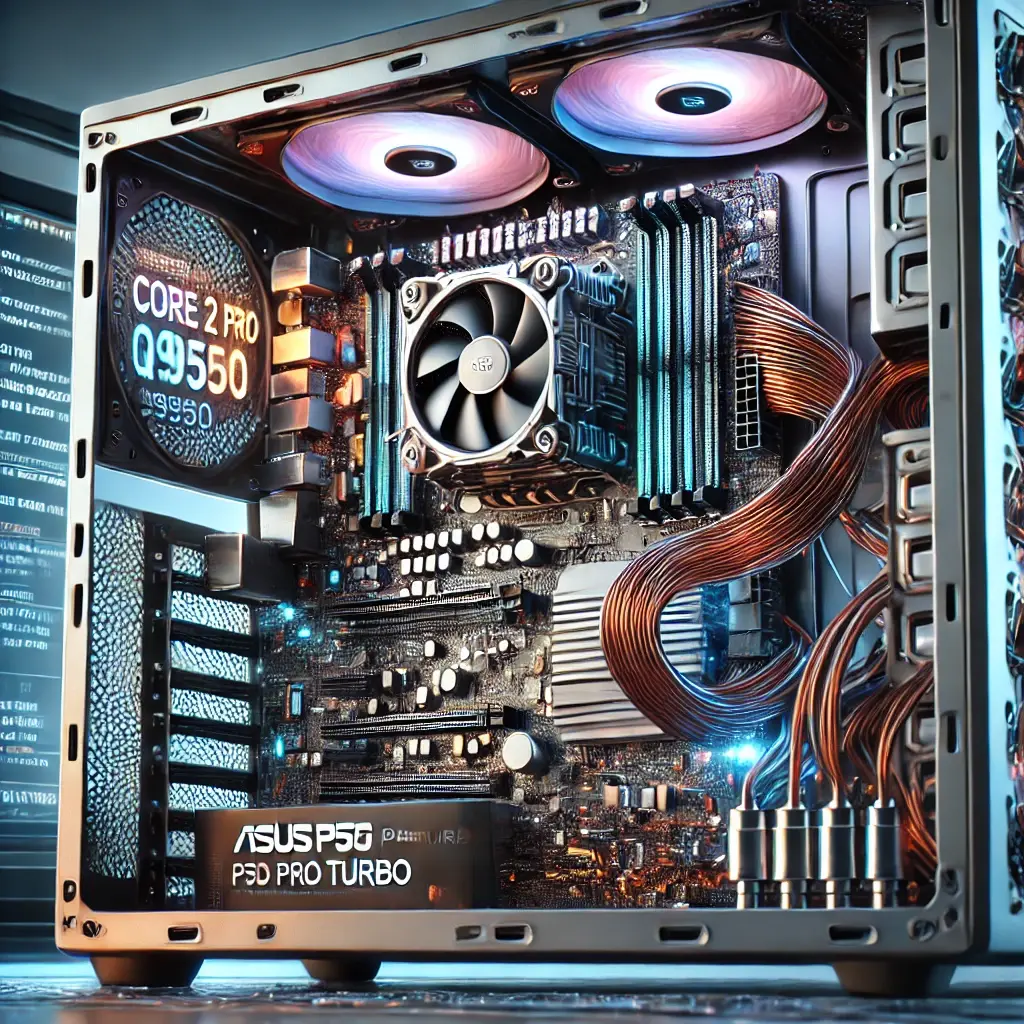When it comes to breathing new life into an older PC setup, overclocking is a proven way to achieve better performance. The combination of the ASUS P5Q Pro Turbo motherboard and the Intel Core 2 Quad Q9550 processor provides a capable platform for this endeavor. By following this detailed guide, you’ll learn how to safely overclock your Q9550 CPU to push its limits, optimize system performance, and maintain stability. This guide covers step-by-step instructions, advanced tips, and important precautions to make the most out of your hardware.
Understanding Overclocking Basics
Overclocking involves running the CPU and other components at speeds higher than their factory defaults. With proper settings on the ASUS P5Q Pro Turbo, users can achieve significant performance gains in both gaming and multitasking.
What Makes Overclocking Beneficial?
- Increased Performance: Higher clock speeds translate to faster processing, making your computer better suited for intensive tasks.
- Enhanced Gaming Experience: An overclocked Q9550 can improve frame rates and reduce latency in games.
- Cost-Effective Upgrade: Instead of purchasing a new system, overclocking can extend the useful life of your current setup.
Preparing for Overclocking on the ASUS P5Q Pro Turbo
Hardware Checks and Recommendations:
- Cooling Solutions: Invest in a high-quality air or liquid cooling system. Overclocking generates extra heat, so effective CPU cooling for overclocked Q9550 is essential.
- Power Supply Unit (PSU): Ensure your PSU provides stable power output. A low-quality PSU can lead to voltage fluctuations, compromising stability.
- Thermal Paste: Applying a good thermal compound between the CPU and cooler helps improve heat transfer.
Step-by-Step Guide to Overclock the Q9550 on ASUS P5Q Pro Turbo
Step 1: Access and Update BIOS
To start, reboot your computer and access the BIOS by pressing DEL or F2. Check the BIOS version and update if necessary for the latest features and stability enhancements.
Step 2: Initial BIOS Configuration
Navigate to the AI Tweaker section in the BIOS:
- AI Overclock Tuner: Set to Manual.
- FSB Frequency: Gradually increase from the default (e.g., start with 333 MHz and move to higher settings as you test stability).
- Q9550 Frequency Boost: Increment in small steps to maintain control over the overclocking process.
Step 3: Voltage Adjustments
Adjusting the core voltage (Vcore) is crucial for stability:
- Increase the Vcore incrementally, starting at 1.25V, if necessary, to maintain stability as you raise the FSB.
- Monitor temperature closely; never let it exceed safe thresholds (70-75°C under load).
Step 4: RAM Configuration
Set the DDR2 RAM configuration to a speed compatible with your new CPU settings. If you push the RAM too hard, it can result in system instability. Keep the DRAM frequency ratio aligned with the CPU to avoid bottlenecks.
Step 5: Save Settings and Reboot
Save the settings and reboot your system. Ensure that the system boots correctly and test the setup under load.
Advanced Overclocking Tips for the ASUS P5Q Pro Turbo
- Load Line Calibration (LLC): This feature can help reduce voltage drops under load, providing more stable overclocking.
- Enhanced Cooling Measures: Consider adding more case fans or replacing your thermal paste with a high-quality brand for better heat dissipation.
- Custom Overclocking Profiles: Create and save profiles in BIOS, so you can switch between different performance modes based on your needs.
Testing and Monitoring Stability
To confirm that your overclock is stable:
- Use Prime95 or AIDA64 to run stress tests.
- Monitor temperatures with HWMonitor or Core Temp to ensure they remain in a safe range.
- Verify system stability by checking for any crashes or performance dips during extended testing.
Maintaining and Troubleshooting Overclocking Results
BIOS Tweaks for Long-Term Stability:
- Fine-tune your FSB adjustments and voltage to find a balance between performance and system lifespan.
- Regularly monitor temperatures, especially if ambient conditions change or new software puts more load on the CPU.
Common Issues and Fixes:
- System Won’t Boot: If your system fails to boot after adjusting settings, clear the CMOS or revert to previous BIOS settings.
- Thermal Throttling: If your CPU temperature gets too high, the processor may throttle performance to cool down. Ensure your CPU cooling solutions are adequate.
FAQs
Q1: What is a safe target clock speed for the Q9550 on the ASUS P5Q Pro Turbo?
A: Most users find that 3.4 GHz to 3.8 GHz is a stable and safe target, depending on cooling and system configuration.
Q2: How can I avoid damaging my components during overclocking?
A: Always increment FSB and voltage in small steps, and monitor temperatures regularly to avoid overheating.
Q3: What software can I use for stress testing?
A: Prime95, AIDA64, and Cinebench are popular choices for testing overclocked CPUs.
Q4: Why does my system restart or freeze during testing?
A: This could be due to insufficient voltage or high temperatures. Adjust voltage settings and improve cooling solutions as needed.
Q5: Does overclocking void the warranty on my motherboard and CPU?
A: Yes, most manufacturers will void the warranty if components are overclocked, so proceed with caution.
Conclusion
Overclock the ASUS P5Q Pro Turbo with a Q9550 CPU can lead to significant performance improvements. Following these steps, tips, and precautions ensures a smoother and more reliable overclocking process. Enjoy enhanced system performance for gaming and productivity while maintaining a balance between speed and stability.

